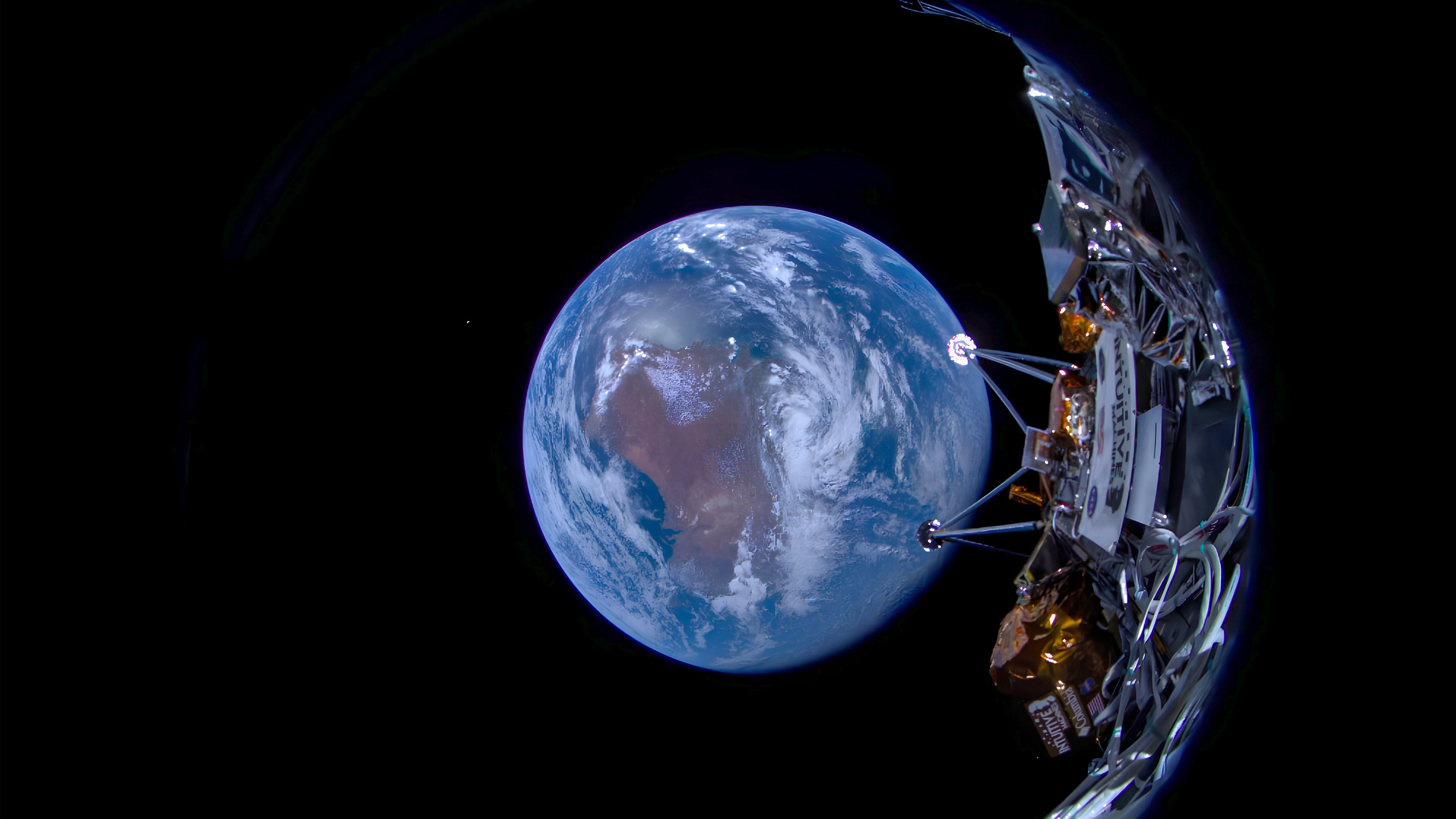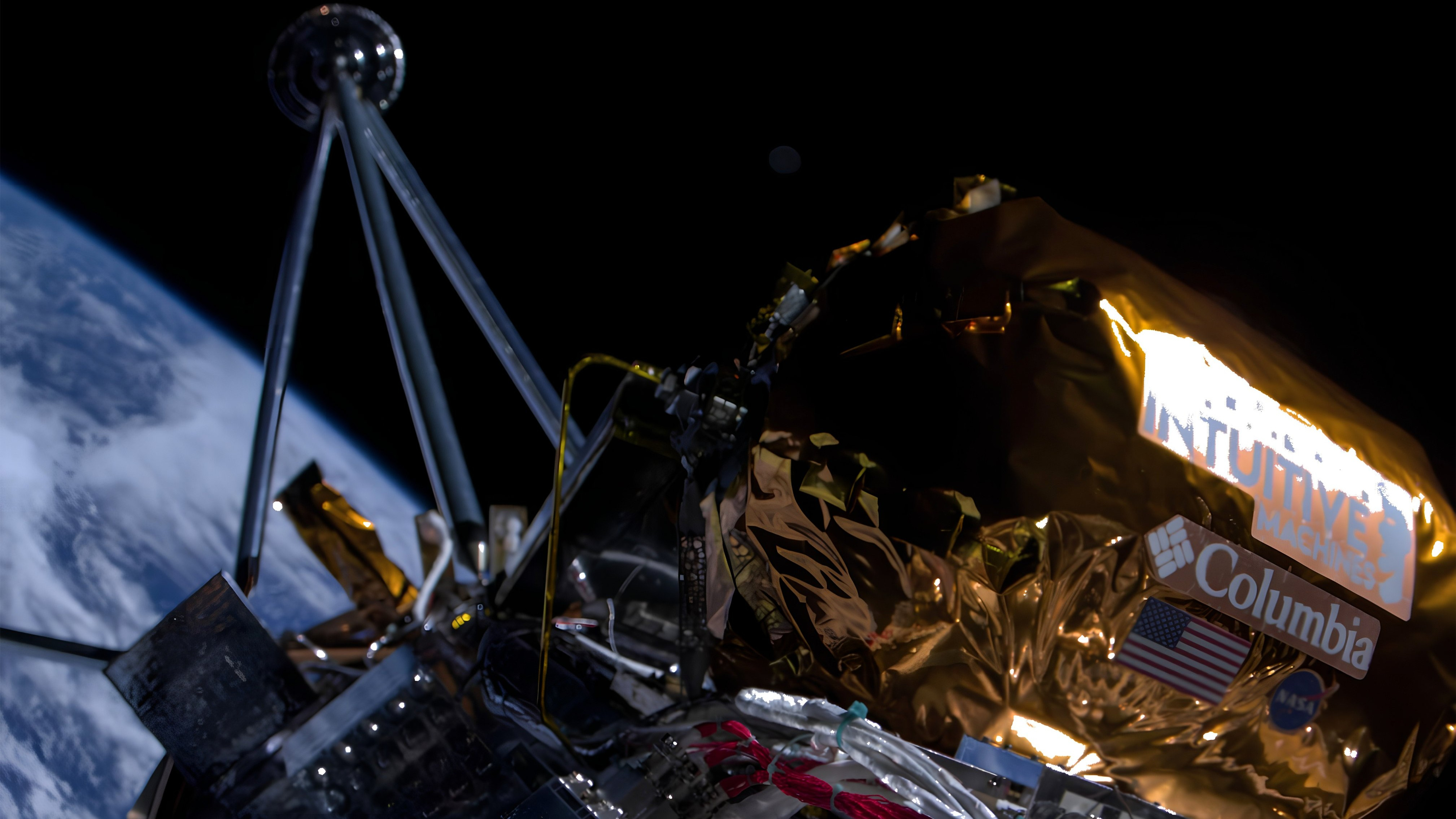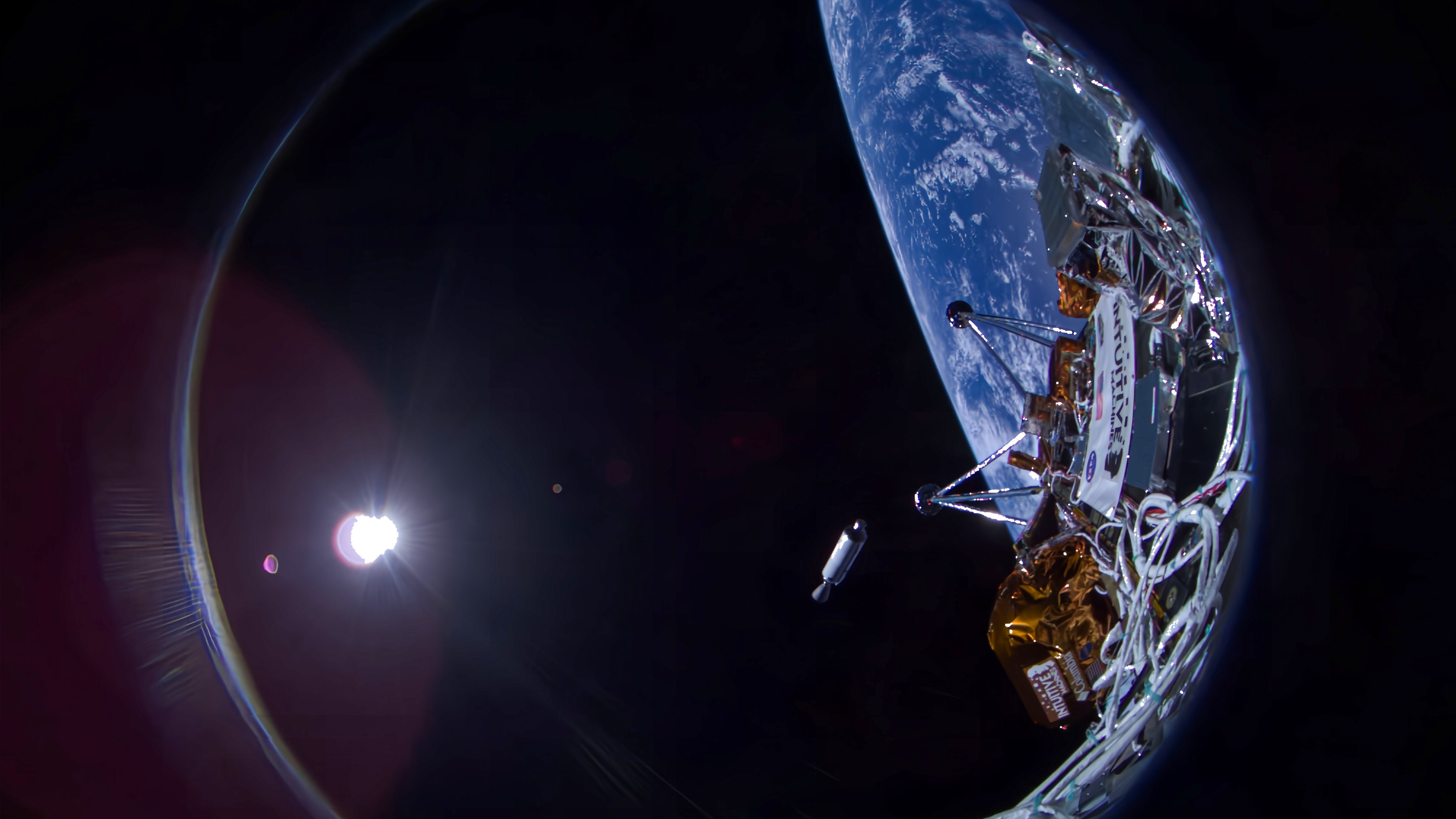
A pioneering moon lander has beamed home its first photos from the final frontier.
Intuitive Machines' robotic Odysseus spacecraft snapped a few selfies with Earth in the background shortly after its Feb. 15 launch atop a SpaceX Falcon 9 rocket — and we can all check them out.
"Intuitive Machines successfully transmitted its first IM-1 mission images to Earth on February 16, 2024. The images were captured shortly after separation from @SpaceX's second stage on Intuitive Machines' first journey to the moon under @NASA's CLPS initiative," the Houston-based company wrote Saturday (Feb. 17) in a post on X that shared four of the photos.
Related: Missions to the moon: Past, present and future

CLPS is the Commercial Lunar Payload Services program, which puts agency science instruments on private robotic moon landers like Odysseus. These instruments are designed to collect data that will aid NASA's Artemis program, which aims to establish a crewed base near the lunar south pole by the end of the 2020s.
Odysseus is carrying six NASA experiments and technology demonstrations, along with six private payloads, on its current IM-1 mission.
IM-1 wasn't the first CLPS effort to get off the ground. That distinction goes to the debut flight of Peregrine, a moon lander built by Pittsburgh company Astrobotic, which launched last month atop a United Launch Alliance Vulcan Centaur rocket.
Get the Space.com Newsletter
Breaking space news, the latest updates on rocket launches, skywatching events and more!
That launch went well, but Peregrine suffered a fuel leak shortly after separating from the rocket's upper stage. The lander couldn't reach the moon, so its handlers steered it to a controlled destruction in Earth's atmosphere on Jan. 18.

Things have been going better for Odysseus. The lander is healthy and communicating with mission control as it heads toward the moon for a planned Feb. 22 touchdown attempt, Intuitive Machines has said.
Odysseus' various systems are performing normally, including its engine, which just aced a crucial checkout in deep space.
"Intuitive Machines flight controllers successfully fired the first liquid methane and liquid oxygen engine in space, completing the IM-1 mission engine commissioning. This engine firing included a full thrust mainstage engine burn and throttle down-profile necessary to land on the moon," the company said in an X post on Friday evening (Feb. 16).
Success on the upcoming landing try would be historic; no private spacecraft has ever touched down softly on the moon.
Odysseus' liquid methane-liquid oxygen combination, by the way, is also employed by SpaceX's Raptor engines, which power the company's giant new Starship rocket. Starship, which SpaceX is developing to get people to the moon and Mars, is being prepped for its third test flight, which could take place in the coming weeks.
Join our Space Forums to keep talking space on the latest missions, night sky and more! And if you have a news tip, correction or comment, let us know at: community@space.com.

Michael Wall is a Senior Space Writer with Space.com and joined the team in 2010. He primarily covers exoplanets, spaceflight and military space, but has been known to dabble in the space art beat. His book about the search for alien life, "Out There," was published on Nov. 13, 2018. Before becoming a science writer, Michael worked as a herpetologist and wildlife biologist. He has a Ph.D. in evolutionary biology from the University of Sydney, Australia, a bachelor's degree from the University of Arizona, and a graduate certificate in science writing from the University of California, Santa Cruz. To find out what his latest project is, you can follow Michael on Twitter.









